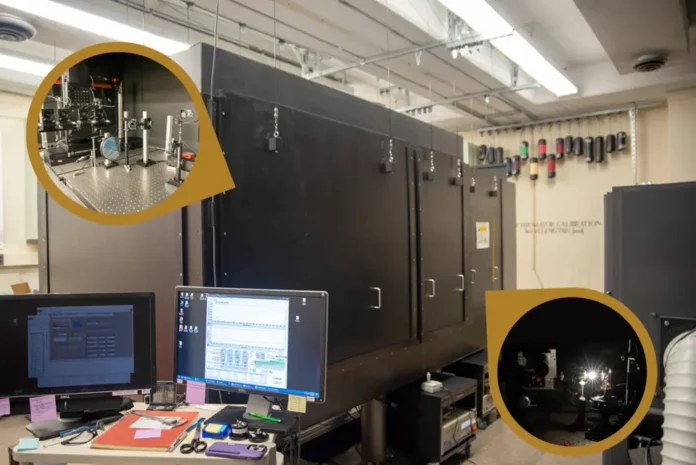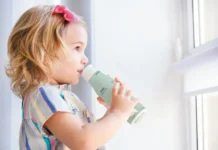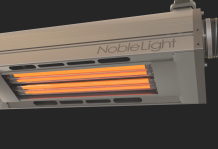Press release submitted on behalf of NIST.
NIST, Gaithersburg, Maryland, has updated its UV calibration facility, bringing world-class service to customers across the country.
Ultraviolet (UV) light may seem like an invisible hero, quietly disinfecting our hospitals, curing our nail polish and killing pathogens in our water. But how can we be sure it’s being used in ways that are safe and effective? To help ensure that every UV beam serves its purpose with accuracy and precision, the National Institute of Standards and Technology (NIST) has rebuilt its specialized calibration laboratory, called the Ultraviolet Spectral Comparator Facility (UVSCF), where industry customers send their UV detection equipment to be precisely measured and calibrated.
UV light serves a wide variety of applications. The germicidal properties of UV light make it a valuable tool for sanitization and disinfection, especially in health-care settings. It also is an effective way to combat microbial contamination in water and is used for drinking water, wastewater and surface water disinfection. Homeowners use UV-cured epoxy to put new kitchen countertops in place. In the nail salon industry, UV light boxes cure gel nail products. And, in recent years, a proliferation of new consumer products, such as UV-protective clothing, prevent unwanted exposure to UV light. Carefully calibrated UV light sources are needed to ensure that these products work as intended.
Understanding the UV Spectrum
Ultraviolet light is invisible, having shorter wavelengths than the light we can see with our eyes. There are three different categories of UV light based on the wavelength: UVA, UVB and UVC. Wavelength refers to the distance between the peaks of a light wave and, when visible, different colors of light. While NIST’s new calibration system caters to all three, its unique forte lies in accurately measuring UVC light, which falls into the 200-300 nanometer range.
UVC light has shorter, higher-energy wavelengths compared with UVA and UVB. This makes UVC very effective at killing germs and viruses.
“Approximately 100,000 people a year die from health care-associated infections in the U.S. They go into a hospital to be treated for one thing, but then end up with an infection from inadequate sanitization,” said NIST research chemist Cameron Miller. “Using UV light to disinfect rooms and equipment offers a potential solution.”
However, UVC light can also harm human skin and eyes, so it needs to be used carefully.
Organizations that use UV light, from the military and research institutions to universities and industrial manufacturers, can check that UV light sources are emitting the right amount and intensity of light with a compact, hand-held device called a UV detector. Like any other measurement instrument, these detectors need to be calibrated, so users periodically pack them up and send them to NIST’s Ultraviolet Spectral Comparator Facility.
Just as one might calibrate a scale by putting an object of known weight on it, NIST experts calibrate the detectors by exposing them to specific UV wavelengths and comparing their readings to a precisely calibrated standard detector. They then assign the calibration values for each detector.
“We are able to measure UV light at very short wavelengths with extremely high accuracy and precision,” said NIST physicist Jeanne Houston. “The UVC range of the UV spectrum is the most challenging part to measure, so achieving this level of precision is something we don’t typically see in this field.”
NIST then returns the detector to the customer, who can have confidence in using it to ensure the safety and effectiveness of their UV systems and products.
Serving the Needs of Emerging Technologies
NIST has maintained a UV calibration facility since the late 1980s. However, by the mid-2010s, the facility could no longer meet the needs of emerging technologies such as UV disinfection because it was not optimized for the critical wavelength range needed for disinfection. The COVID-19 pandemic brought a new interest in improving and rebuilding the system.
“Once COVID struck, UV disinfection was hitting the big time and we were able to totally rebuild the system,” said Houston. “We have implemented massive improvements, and it is my opinion that our new facility is the best in the world.”
For more information, visit www.nist.gov/programs-projects/spectral-responsivity-measurement.







